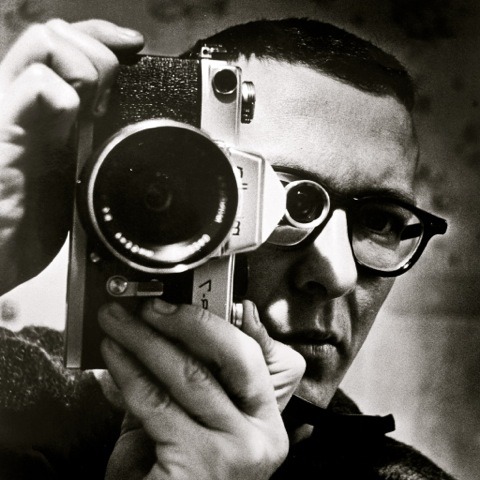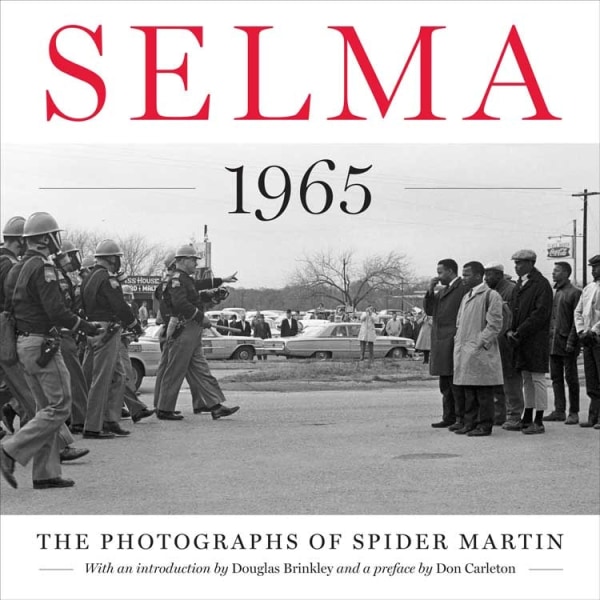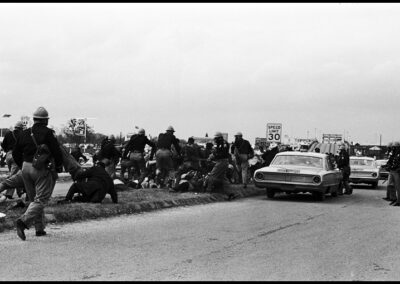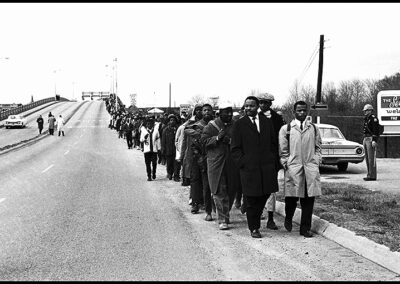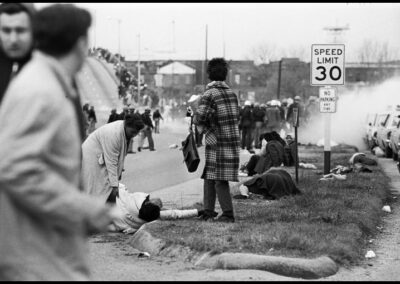Tribute to Spider Martin
2024 edition of Photographic Nights of Selma
Exhibition at Selma Times Journal Building 1018 Water Ave, Selma, AL 36701
from Friday 1st to saturday 2nd 2024,
Alabama photojournalist, James “Spider” Martin, (b. 1939 – 2003) was employed as a staff photographer at The Birmingham News during one of the most eventful periods in American history. On February 18, 1965, the News dispatched Spider to Marion, Alabama to cover the shooting of a young African-American named Jimmie Lee Jackson, by an Alabama State Trooper while attempting to only protect his mother and grandfather after a peaceful protest turned into a skirmish. Jackson died at Good Samaritan Hospital in Selma, Alabama on February 26, 1965. His killing planted the seed for the first Selma to Montgomery protest march which ended as soon as it began in violence and became know as the infamous “Bloody Sunday.”
Once the Bloody Sunday violence preempted national television programing and exposed to the country what was happening in Selma, Alabama, the Birmingham News had no choice but to prominently publish Spider’s pictures, finally forcing them to move the “Negro protest” news from the back of the paper to the front, even publishing a second front page. The News released Spider from his assignment after Bloody Sunday because “the largely segregationist editors thought if you didn’t publish it, much of this would go away.” Spider won out his argument with the News to stay on and with his camera covered these activities day by day, event by event through Turnaround Tuesday and the 3rd and final successful Selma to Montgomery March where 25,000 protesters converged at the steps of the Alabama State Capitol on March 25, determined to become equal citizens and win the right to vote. Spider faced beatings and death threats to capture through his lens the most iconic images of a movement which changed a region and a nation. His photographs traveled all over the world, appearing in such publications as Time, Life, Der Spiegel, Stern, The Saturday Evening Post, Paris Match as well as the News.
Spider studied art at Jacksonville State University, the University of Alabama and the University of Alabama Birmingham. He stumbled onto a career in photography by accident when a client saw polaroids Spider had taken as reference material for a commissioned architectural drawing and ordered photos that would pay more than he was to be paid for the drawing. Spider immediately taught himself photography and soon after won first place in a photo contest sponsored by the Birmingham Post-Herald, which helped him get hired as the youngest photographer at The Birmingham News. After three years with the News, Spider left to become a full-time freelance photographer. He worked for advertising and corporate clients nationwide and was represented for several years by Blackstar starting in 1965. During the News days, Spider’s photographs won numerous awards including the Associated Press awards for Best Feature Photograph, Best Sports Photograph and Best News Photograph.
Spider Martin’s photographic record of this pivotal time in civil rights history includes nearly 3,000 black and white negatives of Bloody Sunday, the Selma to Montgomery March, Viola Liuzzo’s Murder Trial and George Wallace’s 1968 Presidential Campaign. While a small number of Spider’s civil rights era photographs have been published and exhibited, most of these dramatic and moving images have never been shown publicly. Because of their controversial nature for the time, Spider did not attempt to exhibit these images until nearly twenty years after the events he photographed took place. Most have never been printed and exist only as negatives.
“In Spider Martin’s hands, a camera is a weapon of discovery,
revealing truths long concealed by prejudice and mythology.”
— Andrew Young 1992
website: spidermartin.com

